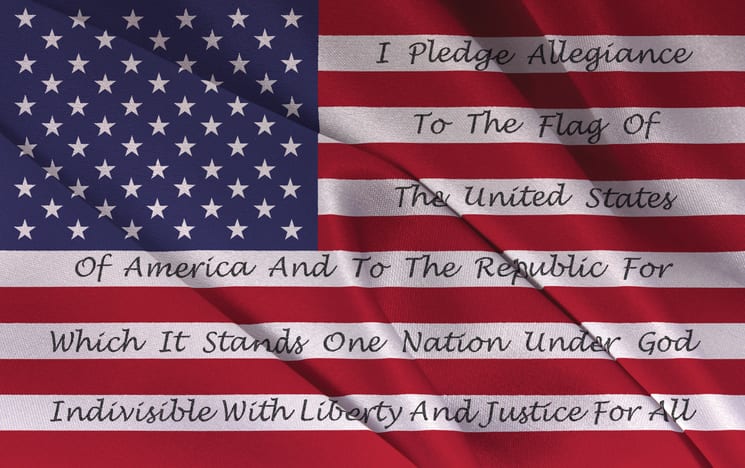Trending Now
In America, kids become familiar with the Pledge of Allegiance from a pretty young age. They recite it in school, and even though that becomes less frequent (and is always optional), it’s not really something American children can avoid.
We also don’t talk much about it, aside from what the actual words mean. We don’t learn about why it was written, we certainly don’t talk about the dangers of extreme nationalism, and no, we don’t learn (at least I don’t remember learning) who penned the allegiance in the first place.

Image Credit: iStock
It turns out that, even though a few people offered tweaks here and there, the bulk was written by a Baptist minister named Francis Julius Bellamy. He was from New York and held a wide range of views during his life (1855-1931), like the equal distribution of wealth, but also refusing voting rights to women and immigrants.
In 1891, Bellamy retired from the ministry and took a job at Youth’s Companion, a nationally circulated magazine for teens and preteens. Bellamy worked on a campaign to sell American flags to public schools across the country, and managed to offload around 26,000 of them.
As a way to rope the holdouts in, Bellamy and his team orchestrated a program to coincide with a celebration of the 400th anniversary of Columbus’ arrival in the “New” World. As part of the program, schoolchildren would recite, in unison, a new salute to the flag – a salute their kids couldn’t participate in unless they had a flag to salute.
Bellamy sat down to compose the salute, focusing on allegiance and loyalty in the wake of the Civil War.

Image Credit: iStock
This is what was published on September 8th, 1892:
“I pledge allegiance to my Flag and the Republic for which it stands, one nation, indivisible, with liberty and justice for all.”
Bellamy sent out his pledge with these instructions to principals and teachers:
“At a signal from the Principal, the pupils, in ordered ranks, hands to the side, face the Flag.
Another signal is given; every pupil gives the flag the military salute – right hand lifted, palm downward, to a line with the forehead and close to it.”
As the pledge was recited and students reached the phrase “to my Flag,” then the “right hand is extended gracefully, palm upward, toward the Flag, and remains in this gesture until the end of the affirmation; whereupon all hands immediately drop to the side.”
These instructions have changed over time, as has the actual recitation that’s widely used.
In 1923, the American Legion and the Daughters of the American Revolution decided at a National Flag Conference that “my flag” should be changed to “the flag of the United States” so that immigrant children wouldn’t be confused. A year later, they added “to America.”
By 1942, 50 years after the first pledge took place, it was standard for public school students to recite it each morning – in fact, many states required it. People started to get uncomfortable with the extended-arm salute, because Nazis, and changed it to the hand placed on the heart.
In the 50s, the Knights of Columbus, a Catholic fraternal organization, adopted a modified pledge that mentioned God. The soon began lobbying Congress to make the change mandatory, and in 1953, Rep. Louis Rabaut (D-Mich) proposed the alteration in a bill.

Image Credit: iStock
Congress approved the addition of the words “under God,” and in 1954, President Eisenhower’s pastor convinced him to sign it into law.
A disclaimer was written into the act in an attempt to head off the protests that the wording violated the separation of church and state, and read:
“A distinction must be made between the existence of a religion as an institution and a belief in the sovereignty of God.
The phrase ‘under God’ recognizes only the guidance of God in our national affairs.”
Not everyone agreed or was placated, of course, and since the act was written people have challenged the wording.
But now you know who wrote it and why, so you’re probably feeling just a little bit smarter today.
At least, I hope so!






